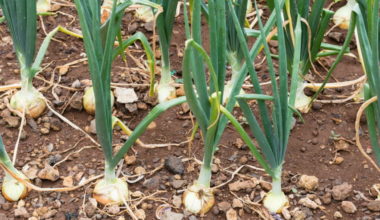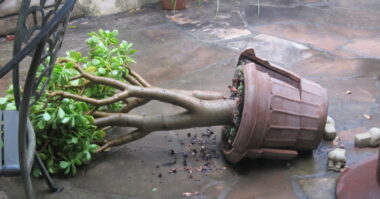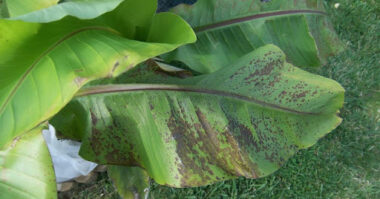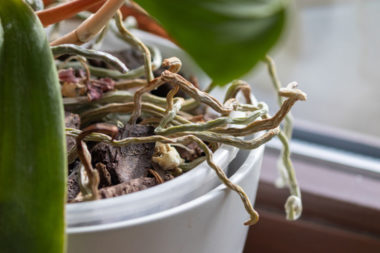Acidity is essential to life on Earth. It determines the characteristics, quality, absorption capacity and solubility of many substances. This is how the enzymes that are responsible for almost all biological processes in organisms work, but only at the right level of acidity. A small fluctuation in blood acidity causes death.
Contents
4 ways to increase the pH of the water
1. Add crushed coral
Coral skeletons and most mollusk shells such as oyster shells usually contain calcium carbonate which naturally raises the pH. Crushed coral can be easily purchased at a local aquarium store or at the aquaponics store (boutiqueaquaponie.com).
The best way to use these corals is to add them to your filter. You can use small filter bags for your tank so that you can easily adjust the volume of crushed coral you want to put in.
If the pH level gets too high, simply removing one or two bags will lower the pH. Another way to use crushed coral is to take a handful and place it in the bottom of your tank.
Remember, however, that the effect of crushed coral on the pH of your tank is gradual. It may take a few hours before you notice a change.
2. Add dolomite chips to your filter
You may have seen this multi-colored gravel in aquariums before. Well, it’s not just for aesthetics but also serves to raise the pH.
These stones that have a rough texture are made of dolomite. This is a type of mineral that naturally turns into stone or gravel over time. It is rich in calcium and magnesium.
White dolomite chips are usually sold in local aquarium stores for use in marine or saltwater aquariums to help stabilize the pH and alkalinity of the water.
The best way to use dolomite to raise the pH of your tank is to add it to the filter. The problem you will have is cleaning a filter full of grit. There are cleaners that swirl the gravel while sucking out the dirt.
3. Use limestone
Limestone is a rock that contains very high levels of calcium carbonate so it is ideal for naturally raising the pH of your water. Calcium chlorate is also suitable.
Limestone is commonly used for landscaping but can be found easily. It is an effective and inexpensive solution for stabilizing the pH of your pond.
To decorate your pond, you can find rocks in aquarium stores, including the “Texas Sacred Rock” which has natural holes and cave-like formations. This type of stone is very popular with fish, which can find good hiding places.
However, you must be careful and use limestone sparingly. You run the risk of raising the pH level of your pond too high and thus endangering your fish. Start by testing with medium-sized limestone and see what impact it has on your pH.
You can adjust the amount of limestone in your pond by regularly measuring the pH level of your water.
4. Use Macroalgae (for aquaponics)
Growing algae in your pond has many benefits and one of them is to keep the pH level of your water stable. Algae absorb harmful carbon dioxide as it is released into the water. They also naturally produce dissolved oxygen that circulates in your pond making the water healthier for all your fish.
For a beginner in aquaponics, growing algae is the safest and cheapest way to stabilize the pH of your pond. Algae grow on their own without much maintenance and are quite tolerant of environmental changes such as water temperature. There is no real need for sophisticated lighting and low light is sufficient for them to grow.
It is in this sense that algae are perhaps better than coral on the long term effect. They can also serve as food for smaller species and will provide your water with the minerals it needs for optimal pH quality.
Why is acidity (pH) important?
Acidity has a substantial influence on the absorbability and solubility of many nutrients.
In addition, acidity has a significant influence on the structure, degradation of organic substances and microscopic life in the soil. pH also influences how nutrients, heavy metals and pesticides are leached from the soil.
A pH value that is too low or too high can damage your plants: it is important to adjust it correctly. How do you know when the pH is wrong? With experience! To help you, here are some of the symptoms you may observe:
Symptoms of a pH that is too low (substrate too acidic)
- Most nutrients can be dissolved easily, which can cause excess manganese, aluminum and iron;
- Deficiencies of phosphorus, potassium, magnesium and molybdenum can be caused by excessive flushing;
- Magnesium deficiencies, especially in cold substrates;
- The soil is generally poor;
- Life in the soil is inhibited.
Symptoms of too high pH (too alkaline substrate)
- Most nutrients dissolve less easily, causing precipitation of calcium, iron and phosphorus compounds;
- Reduced absorption of manganese, phosphorus and iron, but also of copper, zinc and boron. This causes deficiencies, especially in wet and cold substrates;
- In sandy soils, the degradation of organic substances increases considerably if the pH is too high.








